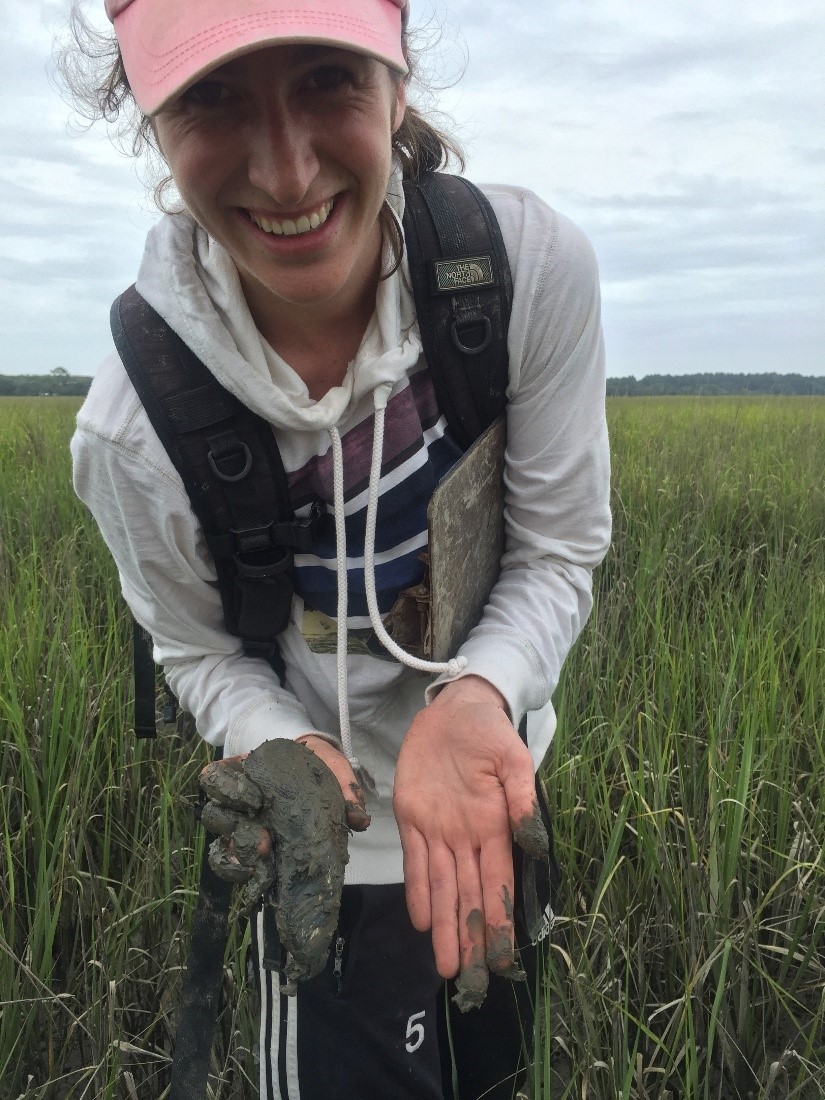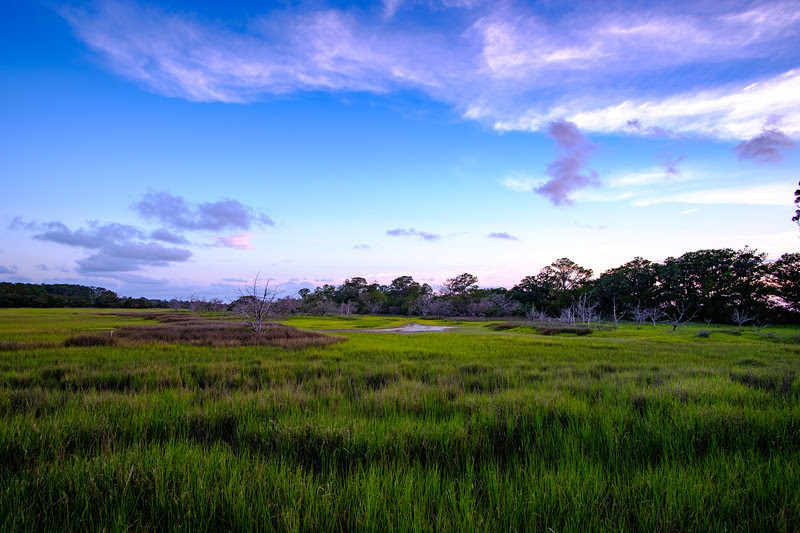
Wetlands, which store vast amounts of carbon, are critical to the fight against climate change. UF scientists are working to understand these complex ecosystems and inform future saltmarsh restoration efforts.
The fate of coastal ecosystems depends on their ability to keep pace with sea-level rise—yet projections of accretion, the process by which marshes build up vertically, have widely ignored effects of animal ecosystem engineers. Researchers at the University of Florida (UF) and the Royal Netherlands Institute for Sea Research combined observational, experimental, digital mapping and modelling work to show that ecosystem engineering by mussels in Southeastern US salt marshes is a much stronger driver of accretion rates than expected, as shown in a new study recently published in Nature Communications.

Sinead Crotty holds an Atlantic ribbed mussel, one of more than 200,000 mussels that were moved during a large-scale field experiment measuring the effects of animals on marsh accretion, a huge undertaking that involved a team of field biologists, technicians, students and numerical modelers working in tandem.
“This result suggests that animals may have a far greater role in helping coastal systems adapt to climate change than previously thought,” said lead author Sinéad M. Crotty, associate director of science of the Carbon Containment Lab at Yale University who earned a Ph.D. in environmental engineering from UF in 2019. “Up to now, there’s been no study showing this connection.”
To first see whether mussels contribute to marsh accretion at smaller scales, Crotty and UF doctoral students Hallie Fischman and Sydney Williams set up several experiments on Sapelo Island, Georgia. Results from these experiments were used by UF doctoral student Daniele Pinton and UF Assistant Professor Alberto Canestrelli, Ph.D., to build a numerical model, called Delft-3D-BIVALVES, the first model of marsh accretion to include mussel effects. The goal of this model was to predict the size of mussel effects at landscape scales.
Then, to test the real-world implications of experiments and numerical modeling, Crotty and a team of UF students conducted a large-scale mussel removal and addition experiment, which involved removing more than 200,000 Atlantic ribbed mussels, Geukensia demissa, by hand and moving them to a new location. Collin Ortals, Ph.D., geospatial data engineer with the UF Center for Coastal Solutions, built a digital elevation model to assess how the presence of mussels affected either the gain or loss in elevation of the marsh surface.
“We found that, in reality, the effects of mussels are far greater than predicted by the models, and occur at large, landscape scales,” said Crotty.
The findings suggest that initiatives to protect and restore coastal areas, specifically efforts to support these systems in adapting to climate change, should consider a larger suite of organisms. In the case of salt marshes, mussels may be the key ‘difference maker,’ Crotty said.
“The present study provides new insight into the mechanisms by which coastal ecosystems that are highly valuable for flood defense, such as salt marshes, can cope with sea-level rise,” said co-author Tjeerd J. Bouma, Ph.D., senior scientist at the Royal Netherlands Institute for Sea Research.

This marsh on Sapelo Island, Georgia is part of an extensive system of coastal wetlands covering vast swathes of the Southeastern US, and the ‘most beautiful office in the world,” says Sinead Crotty, Ph.D., who worked there extensively while a doctoral student at UF.
In addition to coastal defense, salt marshes, which stretch over one million acres of the southeastern US Atlantic coast, supply many other ecosystem services.
“Salt marshes are vital to the cultural identity, economic security and health of the millions of residents that live along the coast in this region,” said Christine Angelini, Ph.D., UF associate professor and project lead. “These wetlands sustain valuable recreational and commercial fisheries, such as blue crabs, oysters and shrimp, and they store large quantities of carbon, thereby helping offset the impacts of climate change.”
Going forward, models of marsh accretion should incorporate the direct and indirect effects of animals.
“While this project only considered their direct effects, mussels have many indirect effects on the associated fauna such as crabs and snails, and flora, such as cordgrass, found in the marsh,” said Pinton, who led the numerical modeling work. “Future work should aim to quantify how the direct and indirect effects of these mussels influence the scale of their effects.”
Exploring the effects of mussels on accretion in other marsh systems is another area for future research.
“More research is also needed to understand if mussels have a significant contribution on marsh accretion for other marsh systems, for instance systems with much different tidal ranges,” added Canestrelli.
This article, “Faunal engineering stimulates landscape-scale accretion in southeastern US salt marshes,” by Sinéad M. Crotty, Daniele Pinton, Alberto Canestrelli, Hallie S. Fischman, Collin Ortals, Nicholas R. Dahl, Sydney Williams, Tjeerd J. Bouma and Christine Angelini and published in Nature Communications, is free to access and can be read here.
The Center for Coastal Solutions, Herbert Wertheim College of Engineering, University of Florida, advances and accelerates science and technology solutions for cleaner waters, sustainable environments and resilient communities.